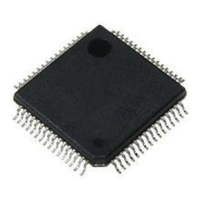Programmer’s Model
ARM DDI 0337G Copyright © 2005-2008 ARM Limited. All rights reserved. 2-5
Unrestricted Access Non-Confidential
The r13, r14, and r15 registers have the following special functions:
Stack pointer Register r13 is used as the Stack Pointer (SP). Because the SP
ignores writes to bits [1:0], it is autoaligned to a word, four-byte
boundary.
Handler mode always uses SP_main, but you can configure
Thread mode to use either SP_main or SP_process.
Link register Register r14 is the subroutine Link Register (LR).
The LR receives the return address from PC when a Branch and
Link (BL) or Branch and Link with Exchange (BLX) instruction is
executed.
The LR is also used for exception return.
At all other times, you can treat r14 as a general-purpose register.
Program counter Register r15 is the Program Counter (PC).
Bit [0] is always 0, so instructions are always aligned to word or
halfword boundaries.
2.3.2 Special-purpose Program Status Registers (xPSR)
Processor status at the system level breaks down into three categories:
• Application PSR
• Interrupt PSR on page 2-6
• Execution PSR on page 2-7.
They can be accessed as individual registers, a combination of any two from three, or a
combination of all three using the Move to Register from Status (MRS) and MSR
instructions.
Application PSR
The Application PSR (APSR) contains the condition code flags. Before entering an
exception, the processor saves the condition code flags on the stack. You can access the
APSR with the MSR(2) and MRS(2) instructions.
Figure 2-2 on page 2-6 shows the bit assignments of the APSR.

